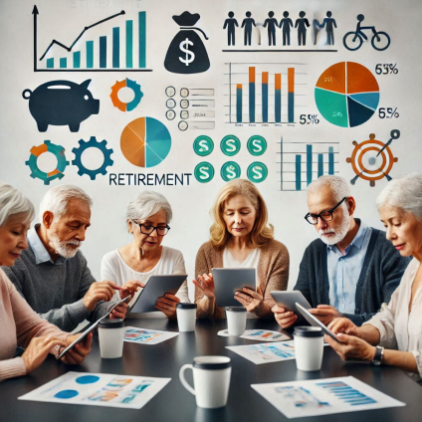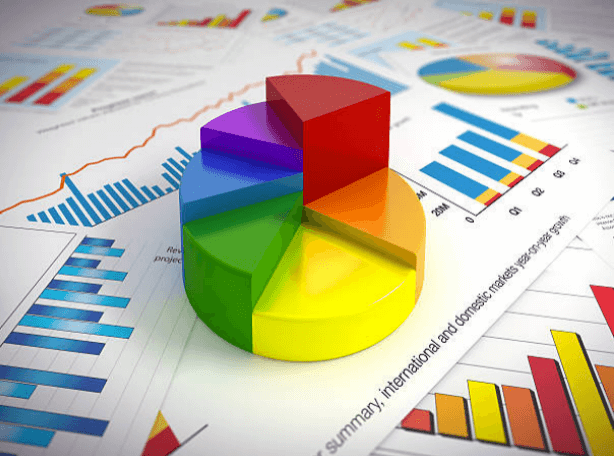Technology is often seen as the realm of the young, but it’s becoming a powerful ally for mid-age seniors in their 40s and 50s. The rise of financial management complexity presents solutions through technology that are user friendly, simple and useful for this population. From retirement saving to planning for healthcare, the holy grail of technology, is that it extends lifespan and opens up new avenues of wealth creation.

Financial Challenges Faced by Mid-Age Seniors
- Rising Healthcare Costs: The cost to mid-aged elders is biggest in healthcare. US (41–50 years) annual out of pocket healthcare cost per couple is estimated by a 2023 AARP report to be about US$12 000. For this figure, the presentation of the figure is further extrapolated at a 5% per year rate due to the impact of inflation and medical cost compounding. Recovery of these expenses without the related financial instruments is a delicate matter.
- Retirement Savings Shortfalls: Especially, a good number in this group is behind on doing the hard work to put their retirement accounts up to date. Vanguard reported this information in a 2022 report, the median individual at age 50 has accumulated $120,000 for retirement savings and financial advisors have recommended that $500,000 should be saved by age 50 to maintain a comfortable retirement living standard.
- Navigating Debt: Credit card debt and mortgage payments are significant concerns. According to the Federal Reserve's 2023 data, credit card debt of $8,500 for adults 45 to 50 years of age is the norm. Under this financial restriction, there is a huge demand from the older generation (geriatric generation) to use more intelligent financial management approaches.
Tech Solutions to Financial Challenges
- Budgeting Apps - A Modern Lifeline: Financial apps (e.g., Mint, YNAB (You Need a Budget) and PocketGuard) can facilitate for senior consumers cost/spending tracking, cost allocation and financial planning. These applications are built on a one-way continuous flow of real time data which can be applied to real time, seamless budget tracking and finance management of the data, i.e., finances without physical counting. For instance, Mint provides alerts of upcoming bills and consumption activity data. According to the 2023 Statista survey, regular use of budgeting applications results in, on average, a monthly savings of 500 US dollars.
- Investment Platforms - Building Wealth Made Easy: Investment platforms (websites) through which investors can gain access to investment assets (e.g., Betterment, Wealthfront, and Acorns) provide low-fee, robo-advisory advice. These platforms are designed to be undemanding and indeed highly amenable to nontraditional and new investors. For instance, Betterment charges a 0.25% annual fee across all accounts while offering personalized investment portfolios. According to Betterment's own data, users following its fully automated recommendations have an average annual return of 7% (i.e., in relation to market conditions).
Healthcare Cost Management Tools
GoodRx and SingleCare are mobile applications to reduce the cost of prescription medication for beneficiaries by comparing the price among pharmacies and then offering a discount. Based on GoodRx, individuals that use the app average 70% less for drugs and that amount of money saved per transaction instantly translates to thousands of dollars saved each year off the top of chronically ill patients. Furthermore, through telehealth services (e.g., Teladoc Health), low cost virtual exams can be scheduled, significantly decreasing the requirement for high cost in person exams. A routine VBT costs approximately $50, as opposed to the $150 that might be spent at a clinic.
Enhancing Retirement Planning with Technology
- Retirement Calculators and Planning Tools: A user, through internet with the help of depletion calculators such as Fidelity's Retirement Score and AARP's Retirement Calculator, can determine how large his/her saving should be (based on the age and income) and what retirement level he/she wants. These are programs for a youth-age and a middle-aged- (aging-in-place) generation and give them a much improved vision of the future of their funds to let them change their retirement savings program. For instance, the Fidelity's Retirement Score goes from 0 to 150, representing retirement readiness. Tool users who are consistently exposed to tool use for its control and can do so affordably make savings of up to 15% of money as reported by Fidelity 2023.
- Robo-Advisors for Retirement Portfolios: Robo-adviser services (e.g., Personal Capital and Wealthsimple) are transforming retirement planning. They handle financial information and produce portfolio recommendations adapted to the risk attitude of a given user and the time to retirement. (Personal Capital) states achieved a 90% success rate in retirement goal achievement among managed portfolio users, assuming correct adherence to best practices.

Cybersecurity: Protecting Financial Data
With increasing accessibility of financial management to all through technology, data security has become one of the priorities. Applications of cyber security, e.g., LifeLock, and Norton 360 will provide ID theft protection and secure browsing technology. 2023, the FBI data shows that attack against 40-and-older population as a whole rose by 30% from the year previous and such defenses are essential among midlife technology-based financial residents who are utilizing the state-of-the-art financial technologies. LifeLock provides up to the moment real-time threat warnings about identity theft events, as well as insurance claims up to $1 million to reimburse for ID theft claims for losses (ID). It is with these services that protection and safety are provided, as protection from financial exploitation also is provided.
The Future of Financial Tech for Mid-Age Seniors
Fintech, accompanied by new sophisticated selective tools designed for elderly patients, is growing at an unsustainable pace. For example, machines learning-based financial advisors are being designed to provide personalized consultation by means of speech-recognition technology. Furthermore, biometric security measures (facial recognition and fingerprint scanner) are also being offered as a solution to aged outlining into an account in an intuitive manner.
Future Outlook: Embracing the Silver Lining of Tech
Technology is a toolkit to manage senior citizens' finances autonomously in their mid-age for ageing middle-generation senior citizens. Collectively and individually for budgeting and investing, healthcare costs management, and retirement planning tech solutions, both streamline and provide actionable intelligence for these processes. If the older generation is chasing the same innovations as the rest, then it will reach financial independence, they will lead to less troubled lives, and will at last lead to improved quality of life.






